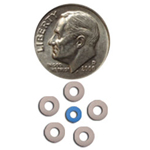
Separators or Spacers
Separators are little rubber doughnuts that may be placed between your teeth to push them apart so that orthodontic bands may be placed during your next appointment. The separators will be removed before we place the bands. Separators do not mix well with sticky foods, toothpicks, or floss.
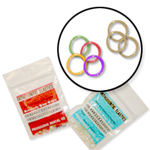
Elastics (Rubber Bands)
Wearing elastics (or rubber bands) improves the fit of your upper and lower teeth. Wear rubber bands as instructed, and remember that the rubber bands work far more efficiently if they're worn as prescribed.
Carriere® Motion 3D Appliances
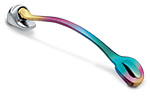 The Carriere® Motion 3D™ Appliances are used to correct either an overbite or an underbite. Traditional treatment for this type of occlusion can include headgear, surgery, and extractions, all of which are eliminated by the non-invasive, sleek, and aesthetic Motion 3D Appliances.
The Carriere® Motion 3D™ Appliances are used to correct either an overbite or an underbite. Traditional treatment for this type of occlusion can include headgear, surgery, and extractions, all of which are eliminated by the non-invasive, sleek, and aesthetic Motion 3D Appliances.
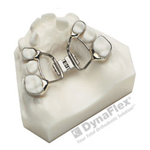
Palatal Expander
The palatal expander "expands" (or widens) your upper jaw by putting gentle pressure on your upper molars each time an adjustment is made. Your orthodontist will instruct you about when and how to adjust your expander. When you achieve the desired expansion, you will wear the appliance for several months to solidify the expansion and to prevent regression.
Mouthguards

Mouthguards help protect your teeth and gums from injury. If you participate in basketball, boxing, hockey, football, gymnastics, lacrosse, martial arts, racquetball, rugby, track and field, skateboarding, skiing and snowboarding, skydiving, soccer, surfing, volleyball, water polo, weightlifting, or wrestling, it is recommended by the American Association of Orthodontists that you wear a mouthguard.
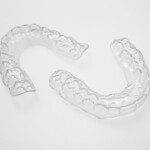
Retainers
Retainers may be removable or fixed. They hold your teeth in their new, correct positions after your teeth have been straightened. Your orthodontist will instruct you on how to care for your retainer and about the duration of the wear. Wearing your retainer as directed is crucial to prevent regression of your treatment.
Molar Build-ups
These little bumps of composite prop open a bite so that patients are less likely to break lower braces and delay progress.
Lingual Arch
A lingual arch is used to preserve space on the lower jaw and to prevent back teeth from drifting forward. It is used most commonly to preserve space needed to unravel crowding, to facilitate a bite correction, or when teeth have been lost prematurely.
Nance Arch
A Nance Arch is designed to preserve space on the upper jaw and to prevent back teeth from drifting forward. It is used most commonly to preserve space needed to unravel crowding, to facilitate a bite correction, or when teeth have been lost prematurely.
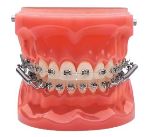
Forsus™
The Forsus Fatigue Resistant Device is a lower compliance dependant alternative to elastics which can promote growth in adolescents, help to reduce excessive overbites, and improve the fit of teeth.
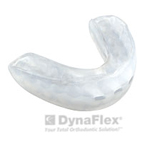
Positioners
Positioners complete the final tooth movements in your orthodontic treatment. With your full cooperation, you should only need to wear the positioner appliance for two to eight weeks.
TADs
Temporary anchorage devices, or TADs, are small titanium anchors used in certain orthodontic cases to help achieve quicker tooth movement with more efficiency and comfort. TADs may be used in addition to braces or as an alternative to headgear.
MARA Appliance
MARA stands for Mandibular Anterior Repositioning Appliance. It is a non-removable appliance that encourages the growth of the lower jaw to help correct severe overbites and minimize the need for extractions or orthognathic surgery.
The MARA appliance is anchored to the molars with crowns, modified crowns, or bands. The lower attachments are fixed to the molars. The upper attachments are removable to enable your orthodontist to make adjustments according to your treatment plan.





